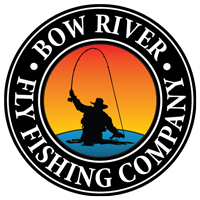A Blog About Our Fly Fishing Adventures on the Bow
So it begins, or continues…
This pastime turned obsession has given me more than I ever imagined. So many great moments over the years that are now precious memories and ever growing Fish Stories.
I am extremely lucky to get out on the River whenever it suits me and cannot imagine a life without fly fishing. For me this sport is “The One Thing” (City Slickers 1991)
I am very grateful and excited to begin a new chapter in my fly fishing journey. Looking back I can now see the connections that have brought me here.
Thank you:
To my folks for moving me out of the city to the banks of the Elbow River and a bike ride away from the Bragg Creek!
To Dave Williams for putting an old bamboo pole in my hands
To Royce Williams for bushwhacking with me all those years ago
To Tara Smith for getting it (or at least pretending you do) and the encouragement to explore my passion
To Kevin Hawes for the Crow’s Nest fishing trip, helping me purchase my first flyrod, showing me the ropes, countless trips down the bow, and for rowing the “Captain Morgan” when it’s your turn
So I encourage all of you to get out there, give this a go. It just might be “The One Thing.”
